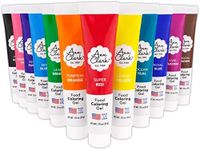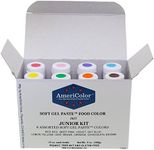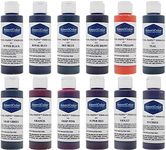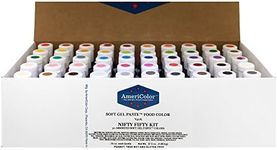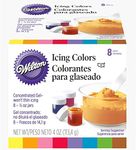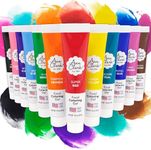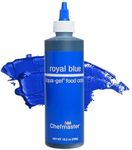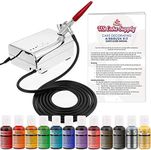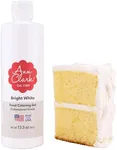Buying Guide for the Best Food Coloring
Choosing the right food coloring can be a fun and creative process, but it's important to consider a few key factors to ensure you get the best product for your needs. Food coloring is used to add or enhance the color of food and drinks, making them more visually appealing. When selecting food coloring, think about the type of food or drink you are coloring, the desired intensity of the color, and any dietary restrictions or preferences you may have. Here are some key specifications to consider when choosing food coloring.Type of Food ColoringFood coloring comes in several forms, including liquid, gel, paste, and powder. Liquid food coloring is the most common and is easy to use, but it may not provide as intense a color as other types. Gel and paste food colorings are more concentrated and provide vibrant colors without adding much liquid, making them ideal for icings and doughs. Powdered food coloring is highly concentrated and can be mixed with water or alcohol for a custom consistency. Choose the type that best suits your application and desired color intensity.
Color RangeThe range of colors available can vary between brands and types of food coloring. Some basic sets include primary colors (red, blue, yellow) that can be mixed to create other colors, while more extensive sets offer a wide variety of pre-mixed shades. If you need specific colors for a project, look for a set that includes those shades or be prepared to mix colors to achieve the desired hue. Consider the versatility of the color range and how it aligns with your creative needs.
Ingredients and SafetyIt's important to check the ingredients of food coloring, especially if you have dietary restrictions or allergies. Some food colorings are made with artificial dyes, while others use natural ingredients like vegetable and fruit extracts. Natural food colorings are often preferred for their health benefits and lack of synthetic chemicals, but they may not be as vibrant as artificial options. Ensure the food coloring is safe for consumption and meets any dietary requirements you have.
Ease of UseConsider how easy the food coloring is to use, especially if you are new to baking or cooking. Liquid food coloring is straightforward and easy to measure, while gel and paste colorings may require more precision and mixing. Powdered food coloring can be versatile but may need to be dissolved before use. Choose a form that matches your comfort level and the complexity of your project.
Staining PotentialFood coloring can sometimes stain skin, clothing, and surfaces. Gel and paste colorings are more concentrated and can be more prone to staining than liquid colorings. If you are concerned about staining, look for food colorings that are labeled as less likely to stain or take precautions such as wearing gloves and using protective coverings on surfaces. Consider the staining potential based on where and how you will be using the food coloring.
